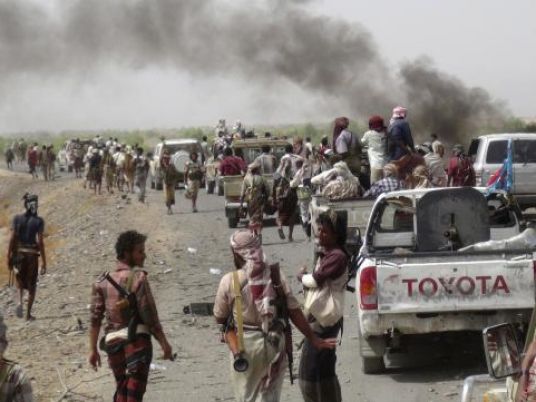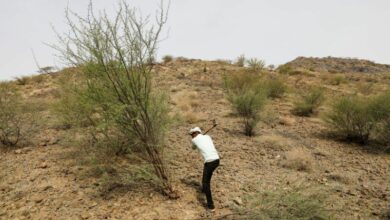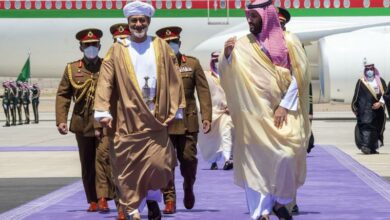
Weeks after seizing Yemen's southern port, Aden, members of a Saudi-led military coalition and the local fighters it supports say they are poised to oust Iranian-allied Houthi forces from the capital Sanaa.
But al Qaeda militants appear to be using the coalition's gains against the Houthis in the south to entrench their position, as fractures start to show between local groups of fighters with the departure of their common enemy.
The prospect of returning exiled President Abd-Rabbu Mansour Hadi remains distant, five months after an advance on his Aden bolthole by the Houthis, who overran the capital a year ago from their northern base, triggered the Saudi-led intervention.
At stake is not just who will rule Yemen, which regional power will hold sway and whether its persistent jihadist threat can be ended, but its future as a single state after centuries of tribal disputes and regional divisions.
Saudi Arabia and its allies want to maintain the state created in 1990 by the merger of the old north and south Yemen, say informed diplomats, but as anger grows over the humanitarian cost, the possibility of division appears to be growing.
"In the absence of a political settlement the battle for Sanaa will be long, brutal, and deadly with no obvious winner. A failure to retake Sanaa by Hadi's camp is likely to lead to a de facto partition of Yemen," said Ibrahim Fraihat, senior political analyst at Brookings Doha Centre.
Such a settlement still looks elusive, with each side attempting to escalate the fighting since the fall of Aden.
In the north, the Houthis have pounded the Saudi border, determined to ensure coalition victories and continued airstrikes come at a cost. In southern Taiz, fierce fighting, and the bombardment of civilians, continues.
Attention has increasingly turned to Marib, a dry tribal region across the arid hills east of Sanaa, where Saudi-linked media and local sources report a build-up of coalition-backed forces preparing for a concerted thrust towards Yemen's capital.
GULF GROUND ROLE
The dozens of Emirati troops guarding Aden's smashed-up airport and their helicopters, tanks and armoured cars lined up on the apron during a recent Reuters visit to the city were ample evidence of the ground role played by Gulf states.
It was the direct involvement of Emirati ground forces, alongside Yemeni troops trained in Saudi Arabia and equipped with sophisticated heavy weapons that allowed the coalition to break months of stalemate to take Aden, informed diplomats say.
The Arab states say the Houthis are a proxy for Iran, an accusation the movement denies, countering that its advance is a revolution against Western-backed officials it says are corrupt, as well as al Qaeda militants. It has joined up with military allies of Yemen's longtime ruler Ali Abdullah Saleh, who was ousted by Arab Spring unrest in 2012.
The further coalition forces move beyond areas where local support is high, the harder it will be.
The most obvious launchpad for a new coalition military push is Marib, where local tribes have for months fought back-and-forth battles against the Houthis and Saleh's forces, and beyond which lies a clear, safe supply route to Saudi Arabia.
Leaders of the exiled government's army have been quoted in Saudi press saying they are building up forces in the province and are ready for a push on Sanaa next month.
A local official told Reuters 130 armoured vehicles, 1,000 Yemeni troops trained in Saudi Arabia and military experts from the kingdom and the UAE had arrived in recent days along with engineers to allow its airstrip to import materiel.
A renewed barrage of attacks on Saudi border positions, including the reported launch of a Scud missile at the kingdom on Tuesday, showed the Houthis and Saleh are determined to make Gulf involvement in the conflict hurt.
On Friday a Saudi Apache helicopter came down on the border, killing both pilots, while on Monday Houthi shells killed Major General Abdulrahman al-Shahrani, commander of the 18th Brigade, and the kingdom's highest ranking casualty of the conflict.
MILITANTS AND FRACTURED ALLIANCES
While the Emirati soldiers did sentry duty by Aden's runway or rested in an upstairs terminal lounge, outside the front entrance stood slight young men with assault rifles slung over their shoulders and curling hair falling across bearded faces.
Many of these un-uniformed fighters, wearing flip-flops and Yemeni futeh sarongs, took up arms when the Houthis reached their city, abandoning daily life as their neighbourhoods were engulfed by street fighting.
But in Yemen's multi-sided conflict, it was never clear how many of these fighters had loyalties beyond those to their immediate neighbourhood, whether to Hadi, to a southern separatist movement or to other political or militant groups.
While coalition forces protect key facilities in Aden, basic security in many areas of the city has collapsed, as a YouTube video showing the mob execution of a suspected Houthi collaborator demonstrated.
More alarming still for Hadi and the coalition, dozens of armed men paraded through Aden's central Tawahi district on Saturday, raising al Qaeda flags, days after a series of bombs exploded outside government offices in the city, killing four.
Hamza al-Zinjibari, a local al Qaeda leader, earlier this month said in a video message that most of the local, coalition-backed fighters against the Houthis were in fact members of the militant group "shaping the jihad" after military leaders fled.
Hadi's government insists the militant group played no role in the defence of Aden from the Houthis and that its apparent display of strength in the city last week was in fact the work of Saleh supporters sowing instability after losing the city.
A local official in Aden said on Wednesday that Gulf forces were training 2,000 local fighters including separatists, Hadi loyalists and members of Islamist parties to take over security in the city temporarily.
That strange mix of competing groups, including some who only a year ago would have been sworn enemies, shows the fragility of the local forces upon which the coalition plans depend.




